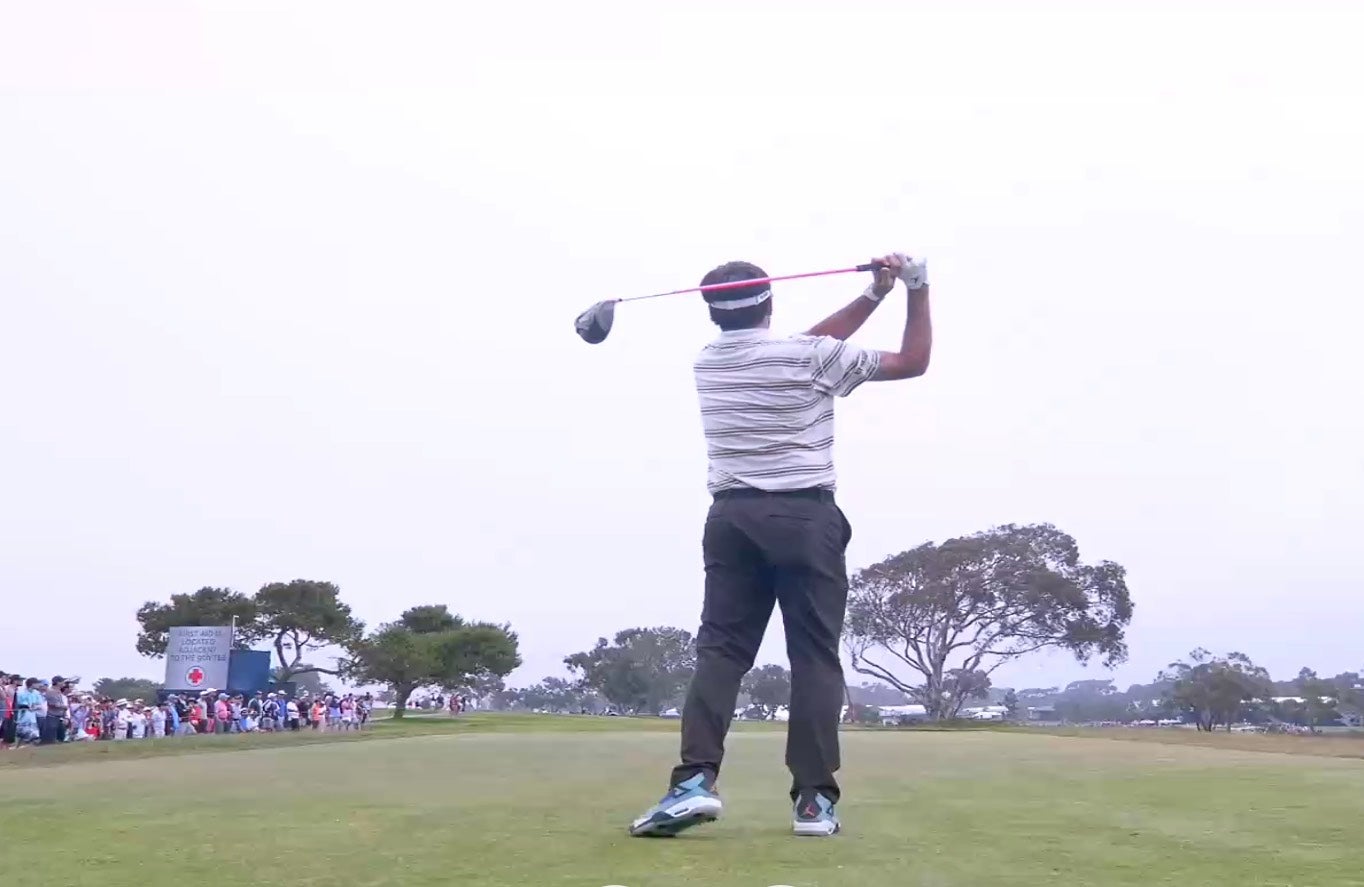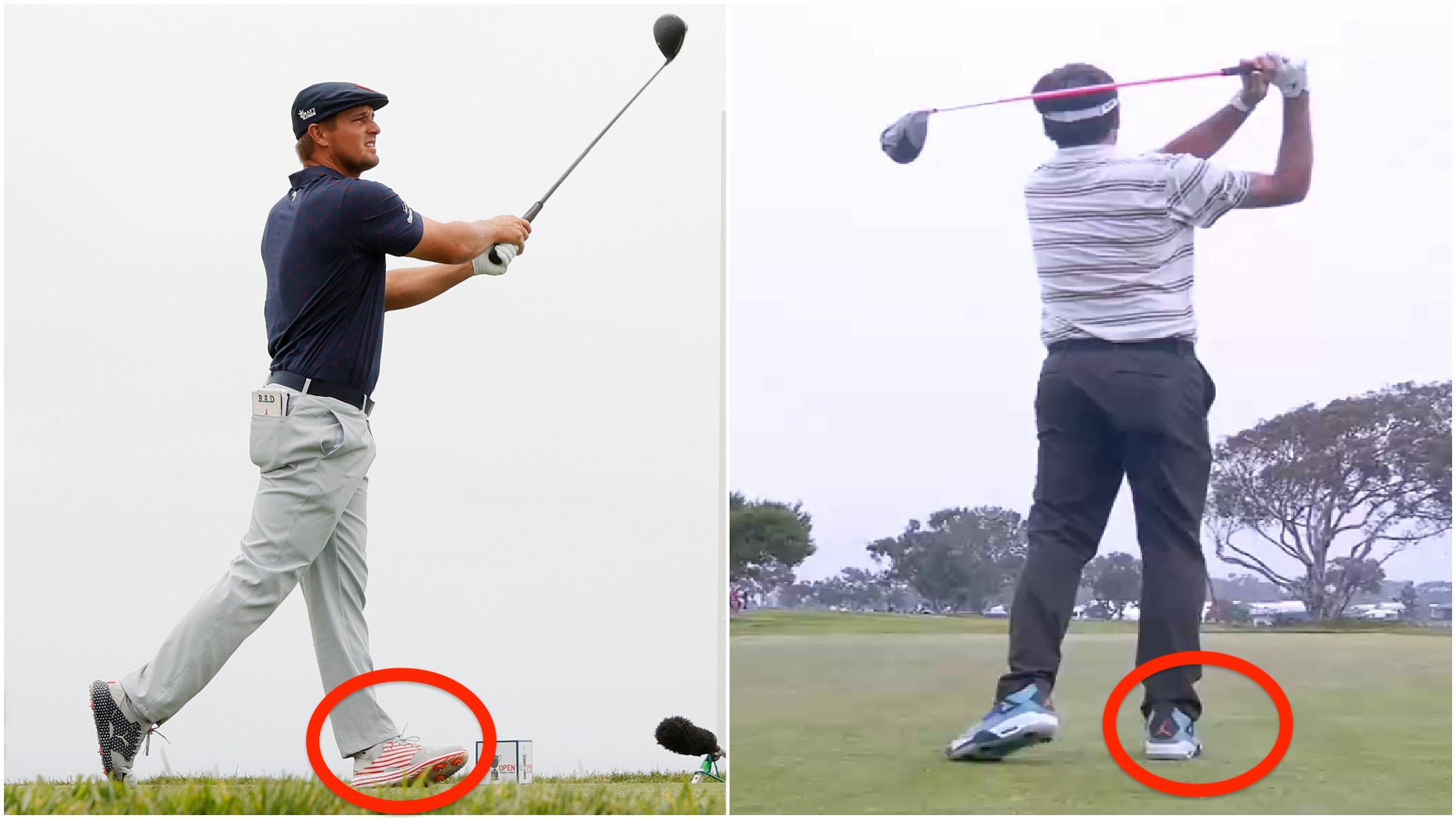Maybe you’ve noticed it watching Bryson DeChambeau go full-ham on a drive, or maybe you just saw this headline and now you’re curious. Either way, watch DeChambeau’s left foot on the drive below, and you’ll notice how it spins out on his through-swing. By the time he gets to impact, his toe is facing the target.
— The IC Workstation (@ClippelBoardy) June 19, 2021
Bubba Watson does it, too.

And Phil Mickelson, who didn’t earlier in his career, has been doing it ever since he starting chasing distance.

Protecting the lead knee
So what’s going? And should you do something similar with your own swing?
Without getting too lost in the weeds, during every golfer’s downswing, they exert certain kinds of pressure on the ground (the fancy name for these are ground reaction forces). Golfers slide across the ground, they torque it to help them rotate, and they push up off it. Ideally, a golfer will sequence these three forces so they max-out at around impact, and then once they hit the ball, they all begin slowing down.
But even though those forces are slowing down post-impact, they’re still moving fast even after they hit the ball — which means that when you’re feet are planted firmly on the floor, you’re sending a lot of force into your lead knee. It’s one of the reasons why Tiger Woods has had so many knee issues over the years.
Which brings us back to Bryson, Bubba and Phil, who all make a conscious decision to lift their lead foot post-impact. That means when they’re turning through the ball they’re doing so freely, and in the process, protecting their knee.
“I make sure to release the pressure on my leg,” Phil explains here. “Otherwise you’re going to tear up your knee and have all sorts of problems.”
Should you do the same? With all due respect, you’re probably not swinging so fast that it’s a huge issue, but it can’t hurt — literally. Allow your momentum to swing you around, rather than relying on your lead leg to absorb the blow, and your knee could thank you later.










